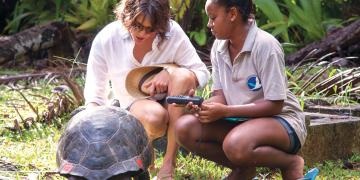Applying a complex-systems approach to address a conservation challenge results in improving multiple SDGs
Using a truly co-creative and locally adapted approach to community and stakeholder engagement and governance
“Elephant-centred” community-based natural resource management (CBNRM) as peace-building.
Building a network of partnerships and aligning interests around a common vision - Don’t go it alone.
Community resource governance in support of protected area and landscape planning (top-down/bottom-up synergy)
